Boaz Carmeli
Unsupervised Translation of Emergent Communication
Feb 11, 2025Abstract:Emergent Communication (EC) provides a unique window into the language systems that emerge autonomously when agents are trained to jointly achieve shared goals. However, it is difficult to interpret EC and evaluate its relationship with natural languages (NL). This study employs unsupervised neural machine translation (UNMT) techniques to decipher ECs formed during referential games with varying task complexities, influenced by the semantic diversity of the environment. Our findings demonstrate UNMT's potential to translate EC, illustrating that task complexity characterized by semantic diversity enhances EC translatability, while higher task complexity with constrained semantic variability exhibits pragmatic EC, which, although challenging to interpret, remains suitable for translation. This research marks the first attempt, to our knowledge, to translate EC without the aid of parallel data.
Semantics and Spatiality of Emergent Communication
Nov 15, 2024



Abstract:When artificial agents are jointly trained to perform collaborative tasks using a communication channel, they develop opaque goal-oriented communication protocols. Good task performance is often considered sufficient evidence that meaningful communication is taking place, but existing empirical results show that communication strategies induced by common objectives can be counterintuitive whilst solving the task nearly perfectly. In this work, we identify a goal-agnostic prerequisite to meaningful communication, which we term semantic consistency, based on the idea that messages should have similar meanings across instances. We provide a formal definition for this idea, and use it to compare the two most common objectives in the field of emergent communication: discrimination and reconstruction. We prove, under mild assumptions, that semantically inconsistent communication protocols can be optimal solutions to the discrimination task, but not to reconstruction. We further show that the reconstruction objective encourages a stricter property, spatial meaningfulness, which also accounts for the distance between messages. Experiments with emergent communication games validate our theoretical results. These findings demonstrate an inherent advantage of distance-based communication goals, and contextualize previous empirical discoveries.
Concept-Best-Matching: Evaluating Compositionality in Emergent Communication
Mar 17, 2024Abstract:Artificial agents that learn to communicate in order to accomplish a given task acquire communication protocols that are typically opaque to a human. A large body of work has attempted to evaluate the emergent communication via various evaluation measures, with \emph{compositionality} featuring as a prominent desired trait. However, current evaluation procedures do not directly expose the compositionality of the emergent communication. We propose a procedure to assess the compositionality of emergent communication by finding the best-match between emerged words and natural language concepts. The best-match algorithm provides both a global score and a translation-map from emergent words to natural language concepts. To the best of our knowledge, it is the first time that such direct and interpretable mapping between emergent words and human concepts is provided.
Genie: Achieving Human Parity in Content-Grounded Datasets Generation
Jan 25, 2024Abstract:The lack of high-quality data for content-grounded generation tasks has been identified as a major obstacle to advancing these tasks. To address this gap, we propose Genie, a novel method for automatically generating high-quality content-grounded data. It consists of three stages: (a) Content Preparation, (b) Generation: creating task-specific examples from the content (e.g., question-answer pairs or summaries). (c) Filtering mechanism aiming to ensure the quality and faithfulness of the generated data. We showcase this methodology by generating three large-scale synthetic data, making wishes, for Long-Form Question-Answering (LFQA), summarization, and information extraction. In a human evaluation, our generated data was found to be natural and of high quality. Furthermore, we compare models trained on our data with models trained on human-written data -- ELI5 and ASQA for LFQA and CNN-DailyMail for Summarization. We show that our models are on par with or outperforming models trained on human-generated data and consistently outperforming them in faithfulness. Finally, we applied our method to create LFQA data within the medical domain and compared a model trained on it with models trained on other domains.
QAID: Question Answering Inspired Few-shot Intent Detection
Mar 21, 2023Abstract:Intent detection with semantically similar fine-grained intents is a challenging task. To address it, we reformulate intent detection as a question-answering retrieval task by treating utterances and intent names as questions and answers. To that end, we utilize a question-answering retrieval architecture and adopt a two stages training schema with batch contrastive loss. In the pre-training stage, we improve query representations through self-supervised training. Then, in the fine-tuning stage, we increase contextualized token-level similarity scores between queries and answers from the same intent. Our results on three few-shot intent detection benchmarks achieve state-of-the-art performance.
Measuring the Measuring Tools: An Automatic Evaluation of Semantic Metrics for Text Corpora
Nov 29, 2022
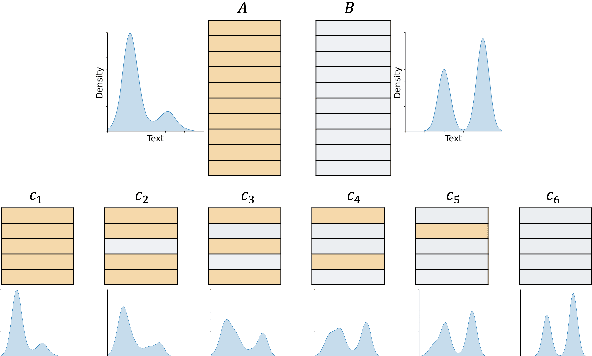
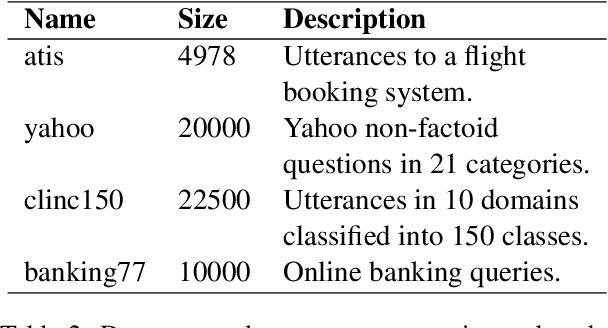
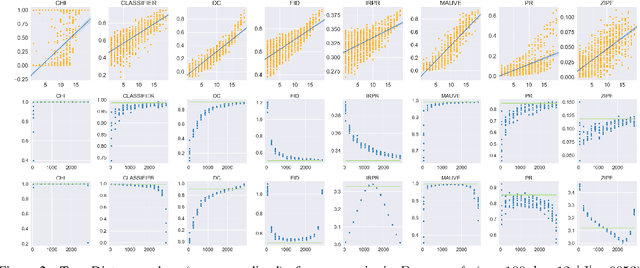
Abstract:The ability to compare the semantic similarity between text corpora is important in a variety of natural language processing applications. However, standard methods for evaluating these metrics have yet to be established. We propose a set of automatic and interpretable measures for assessing the characteristics of corpus-level semantic similarity metrics, allowing sensible comparison of their behavior. We demonstrate the effectiveness of our evaluation measures in capturing fundamental characteristics by evaluating them on a collection of classical and state-of-the-art metrics. Our measures revealed that recently-developed metrics are becoming better in identifying semantic distributional mismatch while classical metrics are more sensitive to perturbations in the surface text levels.
Emergent Quantized Communication
Nov 04, 2022



Abstract:The field of emergent communication aims to understand the characteristics of communication as it emerges from artificial agents solving tasks that require information exchange. Communication with discrete messages is considered a desired characteristic, for both scientific and applied reasons. However, training a multi-agent system with discrete communication is not straightforward, requiring either reinforcement learning algorithms or relaxing the discreteness requirement via a continuous approximation such as the Gumbel-softmax. Both these solutions result in poor performance compared to fully continuous communication. In this work, we propose an alternative approach to achieve discrete communication -- quantization of communicated messages. Using message quantization allows us to train the model end-to-end, achieving superior performance in multiple setups. Moreover, quantization is a natural framework that runs the gamut from continuous to discrete communication. Thus, it sets the ground for a broader view of multi-agent communication in the deep learning era.
Understanding the Properties of Generated Corpora
Jun 22, 2022
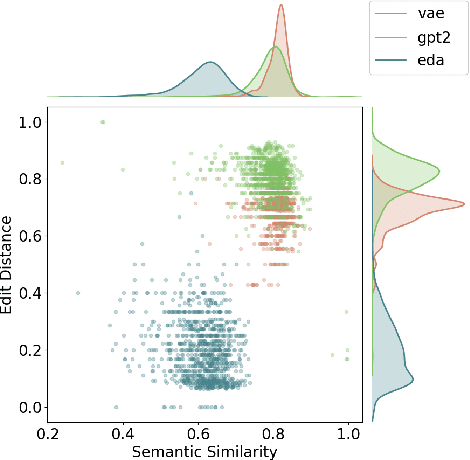
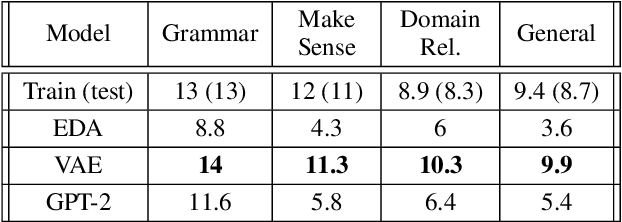
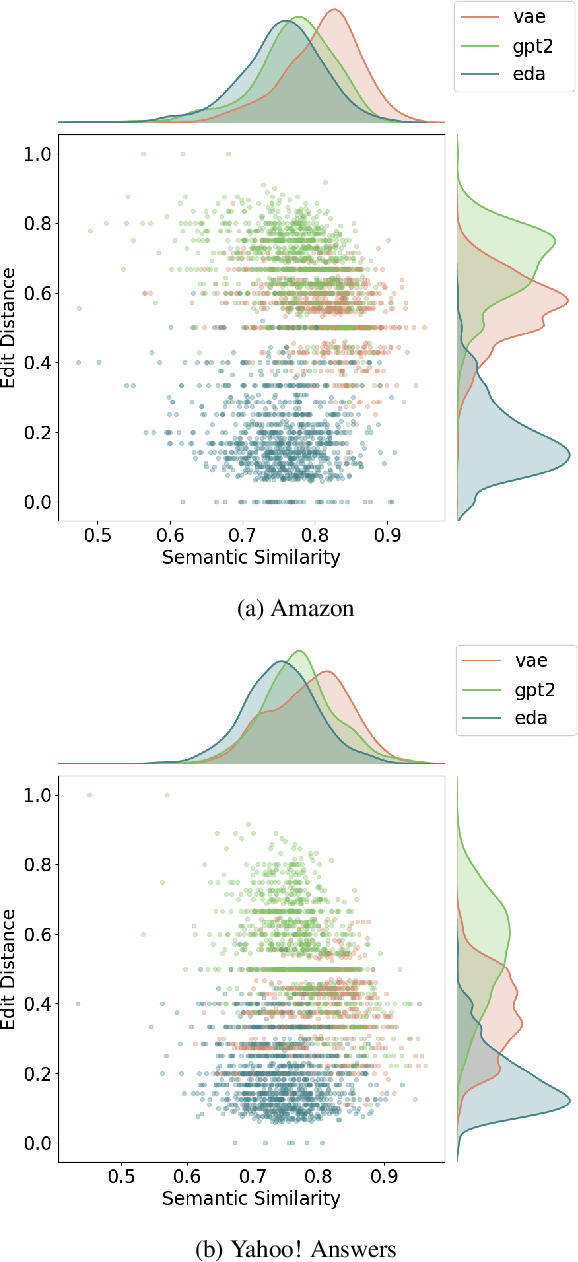
Abstract:Models for text generation have become focal for many research tasks and especially for the generation of sentence corpora. However, understanding the properties of an automatically generated text corpus remains challenging. We propose a set of tools that examine the properties of generated text corpora. Applying these tools on various generated corpora allowed us to gain new insights into the properties of the generative models. As part of our characterization process, we found remarkable differences in the corpora generated by two leading generative technologies.
A new data augmentation method for intent classification enhancement and its application on spoken conversation datasets
Feb 21, 2022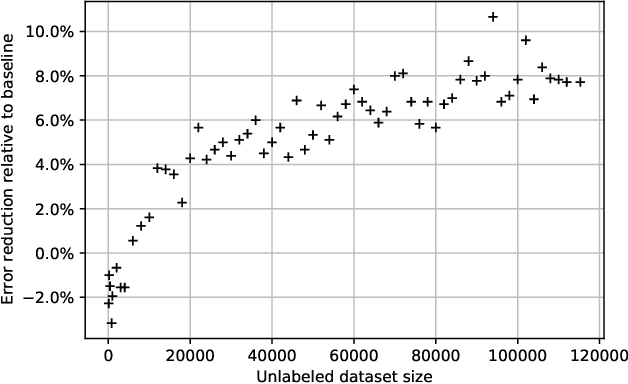
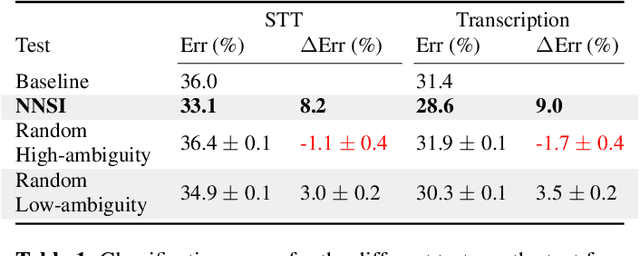
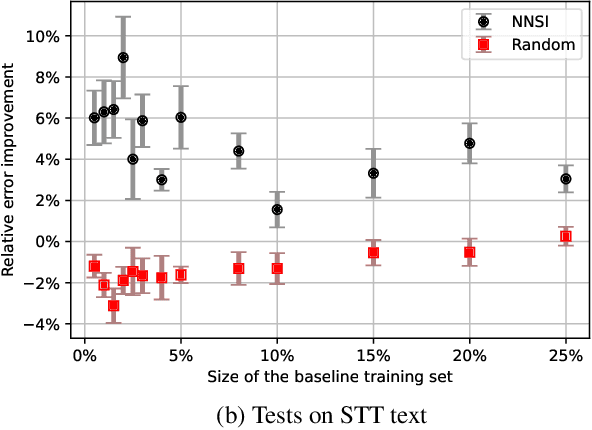
Abstract:Intent classifiers are vital to the successful operation of virtual agent systems. This is especially so in voice activated systems where the data can be noisy with many ambiguous directions for user intents. Before operation begins, these classifiers are generally lacking in real-world training data. Active learning is a common approach used to help label large amounts of collected user input. However, this approach requires many hours of manual labeling work. We present the Nearest Neighbors Scores Improvement (NNSI) algorithm for automatic data selection and labeling. The NNSI reduces the need for manual labeling by automatically selecting highly-ambiguous samples and labeling them with high accuracy. This is done by integrating the classifier's output from a semantically similar group of text samples. The labeled samples can then be added to the training set to improve the accuracy of the classifier. We demonstrated the use of NNSI on two large-scale, real-life voice conversation systems. Evaluation of our results showed that our method was able to select and label useful samples with high accuracy. Adding these new samples to the training data significantly improved the classifiers and reduced error rates by up to 10%.
Improved Goal Oriented Dialogue via Utterance Generation and Look Ahead
Oct 24, 2021



Abstract:Goal oriented dialogue systems have become a prominent customer-care interaction channel for most businesses. However, not all interactions are smooth, and customer intent misunderstanding is a major cause of dialogue failure. We show that intent prediction can be improved by training a deep text-to-text neural model to generate successive user utterances from unlabeled dialogue data. For that, we define a multi-task training regime that utilizes successive user-utterance generation to improve the intent prediction. Our approach achieves the reported improvement due to two complementary factors: First, it uses a large amount of unlabeled dialogue data for an auxiliary generation task. Second, it uses the generated user utterance as an additional signal for the intent prediction model. Lastly, we present a novel look-ahead approach that uses user utterance generation to improve intent prediction in inference time. Specifically, we generate counterfactual successive user utterances for conversations with ambiguous predicted intents, and disambiguate the prediction by reassessing the concatenated sequence of available and generated utterances.
 Add to Chrome
Add to Chrome Add to Firefox
Add to Firefox Add to Edge
Add to Edge